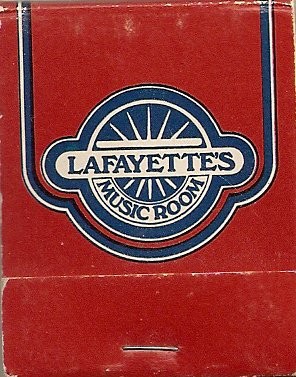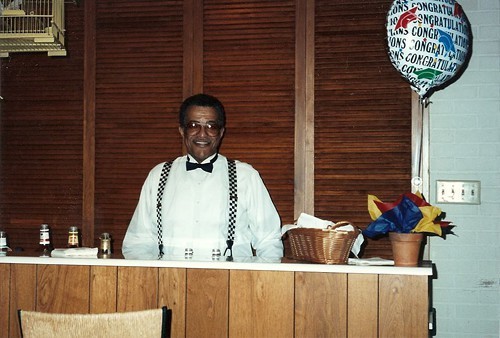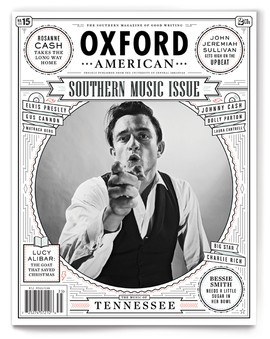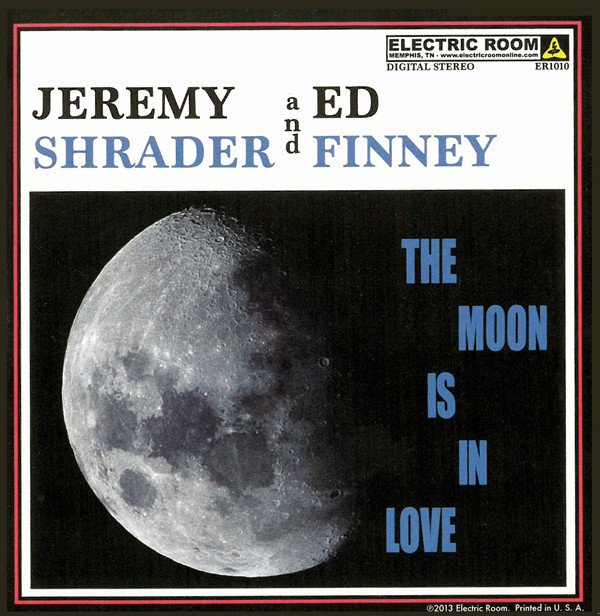If you’ve ever stumbled into one of the dives on Madison on a Friday or Saturday night, chances are you’ve seen True Sons of Thunder. For the past eight years, the band has been providing the soundtrack to alcohol-fueled nights that usually end with some level of regret. After a strict regimen of playing almost every local punk show, the band finally released their first LP in 2011 through Jeth-Row Records, causing fans of negative noise of all kinds to rejoice. This year has been even more productive for the group, as they released a single on Goner Records and another full-length on Little Big Chief. We sat down with guitarist Joe Simpson to find out more about one of Memphis’ longest-running punk bands.
Flyer: How long has True Sons of Thunder been a band?
Joe Simpson: We started at the end of 2005. I can’t claim to be a founding member because I wasn’t at the first practice, but I was at the second one.
The lineup has stayed pretty constant, but you guys have had a few guest appearances over the years.
I was a guitar player in the band but then I left for six months to live in Ohio and play in the Feelers. In my absence, they got Jeff Gunn to play guitar, and when I came back to Memphis, he stayed in the band, so there were three guitarists. But after three or four months, we kicked Jeff out because he liked Ace Frehley too much.
I feel like there have been other members besides Jeff Gunn.
Tom Potter [of Bantam Rooster] played with us for a while. His wife was snow-birding in Memphis as a physical therapist or something, and he played with us for a few months. Eric Friedl was the one who recruited him to play with us, and I was like, “Really? Tom Potter is going to play with us?” We actually ended up playing a lot of shows with him that winter.
Where did the name come from? It’s a biblical reference isn’t it?
Originally, it was Sons of Thunder, which was [banjitar-playing front man] Richard Martin’s thing, because he’s Episcopalian. I don’t know the biblical reference very well, but I think two of the disciples of Jesus were referred to as the Sons of Thunder because they were rambunctious, righteous dudes. They’d go out and fuck shit up and be wacky and loud and annoying, but they were righteous people. That was how Richard viewed everyone in the band, so we were like, okay, cool.
Then we realized that the band from the movie Airheads was called Sons of Thunder, so we added True to it. There were also a lot of Christian bands that were called Sons of Thunder, so we wanted people to know who the “true” sons of thunder were.
Once we came up with the name and TSOT, we were supposed to make up other names around the acronym, but we never got that far. I think the only one we came up with was TSOTS, which stood for True Sons of the Sixties. We used that name for a show at the P&H, and we covered “In-A-Gadda-Da-Vida,” “House of the Rising Sun,” and other hits. Basically, we didn’t play anything cool.
What aspects of Memphis life do you guys cover with your music?
Drunkenness, disappointment, rage, and confusion. Memphis is all of those things. I love this place; it has everything.
Do you think the city itself has an impact on the band?
We couldn’t do this anywhere else. We are a product of this city. At the same time, our music doesn’t make sense to the people who live here. The funny thing is, people who don’t live here understand what we are doing, but no one here understands it, only we do. That’s been the funniest thing: The people who buy our records don’t live here. But we don’t really care, and maybe that’s the most Memphis thing of all. We don’t give a shit about being liked.
After years without any recordings, you’ve had two LPs and a single come out in the past two years. Is the band going to keep working at this pace?
If people are dumb enough to put out records for us, then yes. It’s not like we weren’t trying to put out a record earlier. We recorded that first record five times before it was released. It took that long to get it sounding right. No one believed that we practiced, but we used to practice once a week. Whether it showed or not, we were really into what we were doing.
My favorite recording session was with Andrew McCalla, and he didn’t even like us as a band. But he knew what it was supposed to sound like, and it finally came out right.
How collaborative is the song writing? Being such a loud band, it seems like everyone gets to leave their mark on a song.
The writing process is completely collaborative. Nobody brings parts to practice. We either do it completely together or we don’t do it. We are like hippies in the fact that we jam. We show up at practice and jam for a while and then something will rise out of the tar, and maybe it’ll be a song and maybe it won’t. It’s kind of like the band Can. It’s all about making it up as you go.
Who comes up with the titles for the songs? Is that also collaborative?
Totally. But it’s usually just some stupid joke. Sam Leimer [bass] has the best ones, and Richard has some gems as well. Richard will spit this stuff out that doesn’t make sense at the time, but it hits you later. Richard is a fucking genius; he’s just encased in a man who acts like a buffoon. He’s been a huge influence on me. He’s the leader whether he wants to be or not.
What Memphis band from the past would you say you guys compare to?
We’re like the Panther Burns, except we’re really loud and ugly. We’re kind of like Los Angeles Smog Division or the Memphis Goons. Something that people think is funny, but it’s not supposed to be. We are like a whole band of Ross Johnsons.






